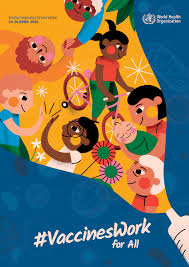Adopting a plant-based diet has become one of the most impactful lifestyle changes for those seeking improved health, environmental sustainability, and mindful living. A green diet emphasizes whole foods such as vegetables, fruits, legumes, nuts, seeds, and grains while minimizing or eliminating animal products. Beyond being a passing trend, it is a conscious movement toward wellness that has captured global attention. Understanding its advantages allows us to see why this way of eating continues to transform lives.
Health At The Core Of A Green Diet
The greatest appeal of a plant-based diet is its positive effect on health. People who commit to eating more greens often experience improved digestion, weight management, and reduced risks of chronic diseases. Scientific research consistently highlights that plant-based foods are high in fiber, antioxidants, and essential vitamins that keep the body strong. For example, fiber improves gut health and helps maintain healthy blood sugar levels. Antioxidants, on the other hand, combat oxidative stress, lowering the chances of conditions like heart disease and certain cancers.
A green diet does not mean bland meals or limited options. On the contrary, it opens up a world of colorful, nutrient-packed dishes that not only nourish but also delight the taste buds. This connection between nourishment and satisfaction makes it easier to stay consistent. Just as people sometimes seek inspiration for aesthetics through something like a girls dp for instagram hidden face, many also look for unique and creative ideas to keep their meals visually appealing. Presentation is part of the experience, and plant-based meals naturally offer a wide palette of colors.
Environmental Impact And Sustainability
Eating green extends beyond personal health and touches the planet. Traditional diets high in meat consumption contribute significantly to greenhouse gas emissions, deforestation, and overuse of water resources. Switching to a plant-based approach lessens the environmental footprint by reducing demand on these fragile ecosystems. This collective effort allows individuals to feel that their food choices play an active role in combating climate change and protecting natural resources for future generations.
Businesses have also adapted to this growing demand. Restaurants, cafes, and food suppliers now frequently appear in tools like the australia business listings directory, showcasing the shift in consumer preference. With more options available, people have greater access to plant-based foods whether they are cooking at home or dining out, making the green diet more practical than ever before.
Mental And Emotional Benefits
Food is not just about fueling the body; it also plays an essential role in emotional wellbeing. A diet rich in fruits, vegetables, and whole foods is known to enhance mood and reduce feelings of anxiety or depression. Nutrients such as magnesium, folate, and omega-3 fatty acids (from plant-based sources like chia or flaxseeds) have been linked to better brain function and mental clarity.
Many individuals also find comfort in the mindfulness that comes with plant-based living. Cooking meals with fresh ingredients encourages presence and gratitude for the food on the table. Just like poetry or the best sad shayari evokes deep emotion, food too can stir feelings of contentment when approached mindfully. This connection between mind and body is often underestimated but becomes evident in daily life.
Plant-Based Living And Lifestyle Choices
Incorporating a green diet often goes hand in hand with other lifestyle improvements. People who choose plant-based eating may also become more conscious of fitness, self-care, and sustainability practices. This holistic approach fosters a sense of balance.
For families, plant-based eating can also introduce children to diverse flavors early on, making them more open to a variety of foods as they grow. From preparing lentil curries to fresh salads, the kitchen becomes a space where health meets creativity. Interestingly, just as someone browsing houses australia for sale evaluates long-term investment and comfort, choosing a plant-based diet can be viewed as a long-term investment in health and wellbeing. Both require thoughtful decision-making and yield lasting rewards.

Social And Cultural Influence
Plant-based diets are not isolated to a single culture. Different cuisines worldwide highlight the use of vegetables, grains, and legumes in creative ways. Mediterranean diets emphasize olive oil and legumes, while Asian cuisines feature soy, rice, and leafy greens in abundance.
In modern settings, plant-based menus are now staples in many eateries. Even within diverse options like the australian restaurants directory, vegetarian and vegan listings are steadily growing. These shifts reflect a cultural transformation where plant-based meals are no longer niche but mainstream. It proves that the green diet is not about restriction but about embracing variety in a healthier way.
The Power Of Choice
The most powerful element of a plant-based diet is its flexibility. Unlike rigid meal plans, it allows individuals to define what balance looks like for them. Some people adopt a fully vegan lifestyle, while others prefer a flexitarian approach, enjoying plant-based foods most of the time but occasionally including animal products. This adaptability ensures that anyone can begin the journey without pressure or unrealistic expectations.
By focusing on what can be added rather than what is restricted, the green diet builds a sense of abundance. With plant-based living, every plate becomes an opportunity to enrich health, protect the environment, and connect with culture and community.
Conclusion
Exploring the benefits of a green diet reveals more than just a food choice—it represents a lifestyle of mindful decisions that positively impact health, emotions, and the planet. Plant-based power is about discovering how plants can nurture us while reminding us of our connection to nature and to one another. With growing access through online resources, creative recipes, and supportive communities, adopting plant-based eating is easier than ever. Whether it’s for personal health goals, sustainability, or emotional fulfillment, a green diet holds the potential to enrich life in meaningful ways.










